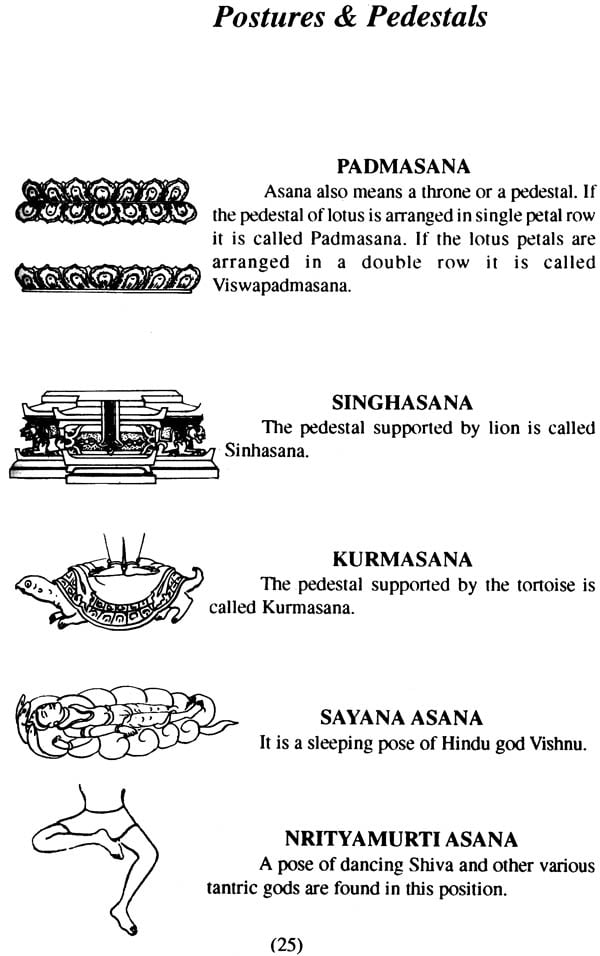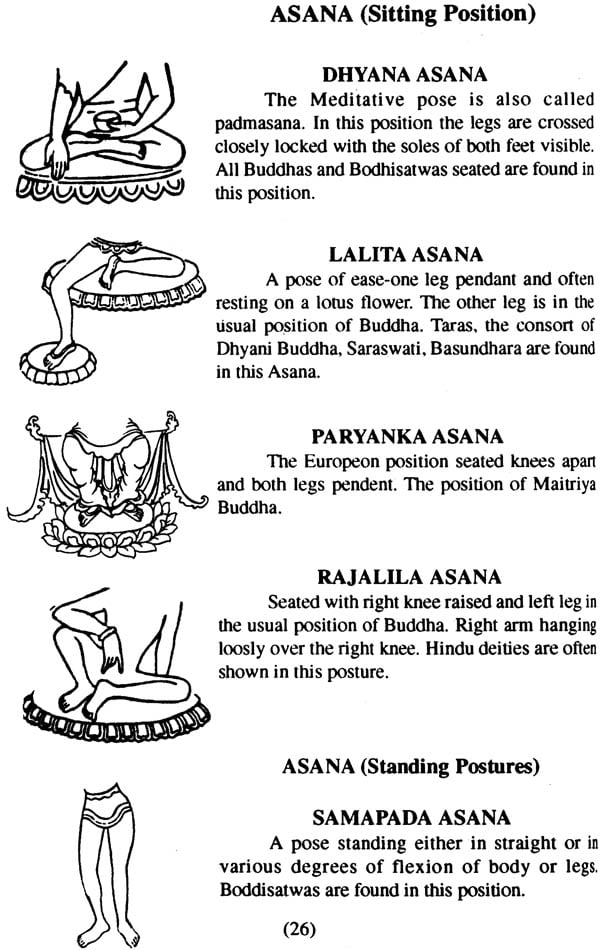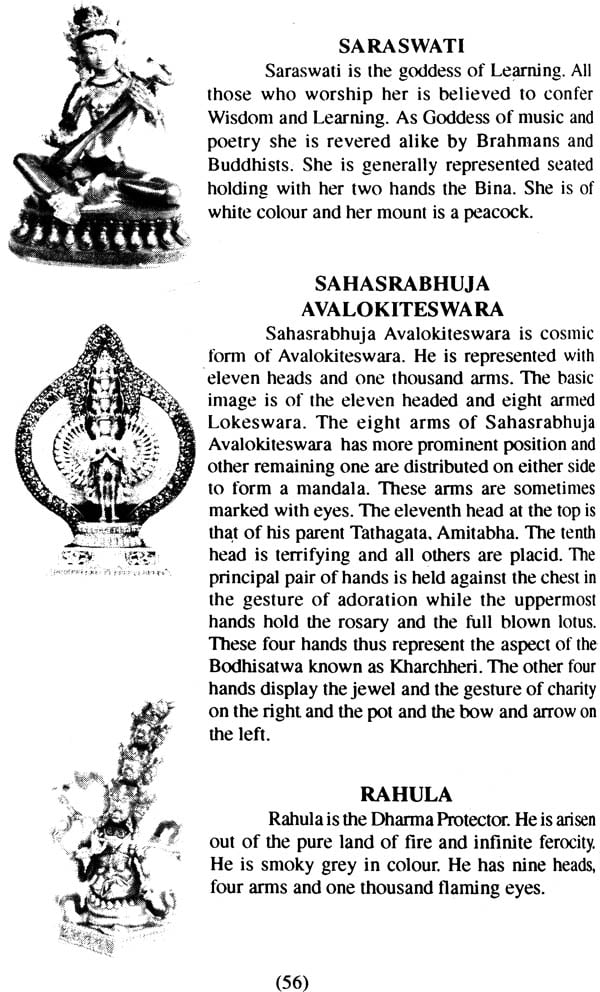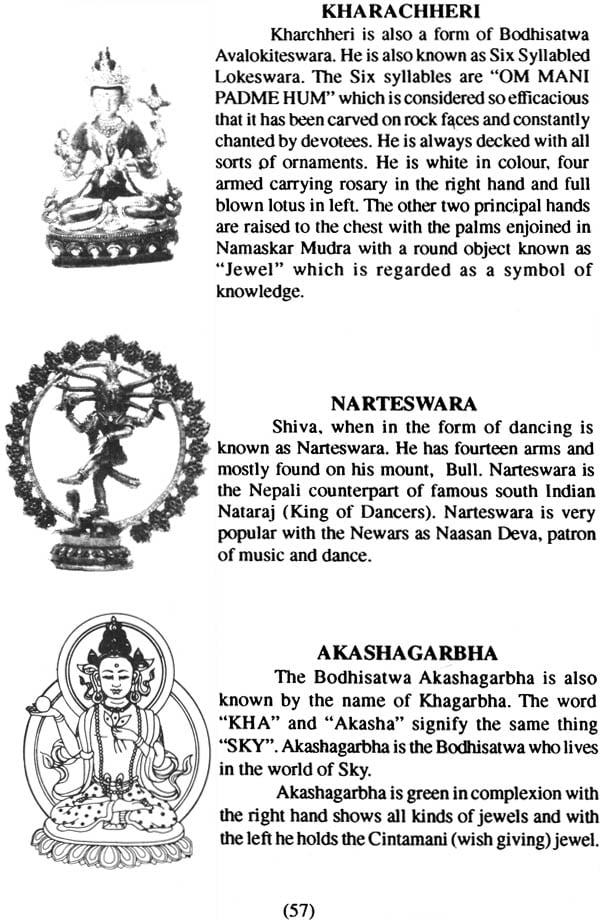
Short Description of Gods, Goddesses and Ritual Objects of Buddhism and Hinduism in Nepal
Book Specification
| Item Code: | IDI092 |
| Author: | Jnan Bahadur Sakya |
| Publisher: | Handicraft Association of Nepal |
| Language: | English |
| Pages: | 77 (Illustrated in Black & White) |
| Cover: | Paperback |
| Other Details | 5.5"X 8.4" |
| Weight | 110 gm |
Book Description
For two and Half thousand years, people have followed a religion based on the teachings of a man they called the Buddha, meaning the Enlightened One.
The starting point in Buddhism is mankind and the way in which they suffer not just physical pain but the general feelings of dissatisfaction with life, the craving to achieve or have something more, the fear of change and death. It seeks to give a person peace of mind and to encourage and develop loving compassion towards all living beings.
Buddhism is not a dogmatic religion in the sense that it does not require a person to accept fixed beliefs and ideas. It does not concern itself by debating whether or not there is a God. It regards all such beliefs as secondary importance. The main thing is to help people overcome suffering and to achieve a full life.
The goal of Buddhist religion is enlightenment which means to be fully awake to the reality of life, to have an understanding of why there is suffering in the world and how it may be overcome. Buddhists claim that in the teaching of the Buddha they find a path which will eventually lead them to achieve this enlightenment for themselves.
There is a great variety within Buddhism. There are two main Branches of the religion - Theravada or Hinayana Buddhism in the South and Mahayana Buddhism in the North. Nevertheless there is a common basis to all Buddhism expressed in what is called the Dharma (teaching) and the Sangha (Community of Monks).
| 1 | INTRODUCTION OF BUDDHISM & HINDUISM | 7 |
| Hinayana Buddhism | 8 | |
| Mahayana Buddhism | 9 | |
| Vajrayana Buddhism | 10 | |
| Hinduism | 11 | |
| 2 | RITUAL OBJECTS | |
| Agni (Flame) | 12 | |
| Akshamala (Rosary) | 12 | |
| Ankush (Goad) | 12 | |
| Bana (Arrow) | 12 | |
| PA (Battle Axe) | 14 | |
| Bell (Ghanta) | 14 | |
| Bhumba | 24 | |
| Bina (Lute) | 13 | |
| Chaitya (Stupa) | 13 | |
| Chakra (Wheel) | 13 | |
| Chandra (Moon) | 13 | |
| Chhatra (Parasol) | 15 | |
| Chamaru (Fly Whisk) | 15 | |
| Damaru (Drum) | 15 | |
| Dhoop Dani (Incense Burner) | 15 | |
| Dhanusa (Capa) | 16 | |
| Dhwoja (Banner) | 16 | |
| Dipa (Lamp) | 15 | |
| Gada (Mace) | 16 | |
| Ghau (Prayer Box) | 24 | |
| Kalasa (Vase) | 16 | |
| Kangling | 16 | |
| Kapala (Skull) | 14 | |
| Kartika | 17 | |
| Khadga (Sword) | 17 | |
| Khatwanga | 17 | |
| Lingam (Linga) | 17 | |
| Mandala | 18 | |
| Matsya (Fish) | 18 | |
| Mayurapiccha (Feathers) | 18 | |
| Mukha (Ritual Crown) | 23 | |
| Naga (serpent) | 18 | |
| Nakula (Mongoose) | 19 | |
| Padma (Lotus) | 19 | |
| Phurpa | 19 | |
| Poorna Kalash (Full Vessel) | 23 | |
| Prayar Wheel (Mane) | 19 | |
| Pustaka (Book) | 20 | |
| Sankha (Conch Shell) | 20 | |
| Shield | 20 | |
| Shirivasta (Endless Knot) | 20 | |
| Surya (Sun) | 20 | |
| Sukunda (Oil Lamp) | 23 | |
| Swastika | 21 | |
| Tri Ratna | 21 | |
| Trishula (trident) | 21 | |
| Tantra | 22 | |
| Utpala (half- Closed Lotus) | 21 | |
| Vajra (Dorje) | 14 | |
| Viswa Vajra (Double Dorje) | 21 | |
| Yab- Yum | 22 | |
| Yantra | 22 | |
| 3 | POSTURES & PEDESTALS | |
| Padmasana | 25 | |
| Singhasana | 25 | |
| Kurmasana | 25 | |
| Sayana Asana | 25 | |
| Nrityamurti Asana | 25 | |
| Dhyana Asana | 26 | |
| Lalita Asana | 26 | |
| Paryanka Asana | 26 | |
| Rajlila Asana | 26 | |
| Sampada Asana | 26 | |
| Alidh Asana | 27 | |
| MUDRA | ||
| Abhaya | 27 | |
| Bhumisparsa | 27 | |
| Dharmachakra | 27 | |
| Dhyana Mudra | 28 | |
| Jnana Mudra | 28 | |
| Namaskar Mudra | 28 | |
| Tarjani Mudra | 28 | |
| Vajrahunkara Mudra | 28 | |
| Varada | 29 | |
| Vitarka Mudra | 29 | |
| 4 | GODS AND GODDESSES OF BUDDHISM AND HINDUISM | |
| Adi Buddha | 30 | |
| Amitabha | 30 | |
| Amoghshiddhi | 31 | |
| Amoghapasa Lokeswar | 31 | |
| Akshobhya | 31 | |
| Ardhanariswara | 32 | |
| Avalokiteswara | 32 | |
| Vajrasatwa | 32 | |
| Bhairab | 33 | |
| Biswarupa | 33 | |
| Chakra Sambara | 33 | |
| Chandramaharosan | 34 | |
| Citipati (Two Skeletons) | 34 | |
| Chintamani Lokeswar | 34 | |
| Dakini | 35 | |
| Dikpalas | 35 | |
| Dhyani Buddhas | 35 | |
| Dipankar | 36 | |
| Durga | 36 | |
| Ekadas Lokeswar | 37 | |
| Ganesh | 37 | |
| Garuda | 38 | |
| Haybajra | 38 | |
| Green Tara | 38 | |
| Hariharivahan Lokeswar | 39 | |
| Hayangriva | 39 | |
| Heruka | 39 | |
| Indra | 40 | |
| Jambhala yellow Kubera) | 40 | |
| Kalacakra | 40 | |
| Kali | 41 | |
| Bajrayogini | 41 | |
| Kubera | 41 | |
| Kumara | 42 | |
| Laxmi | 42 | |
| Lha Mo (Chhwaskamuni) | 42 | |
| Mahasiddhas | 43 | |
| Maitreya Buddha | 43 | |
| Manjushree | 44 | |
| Mayadevi | 44 | |
| Lokeswar | 44 | |
| Mahalaxmi | 45 | |
| Megh Sambara | 45 | |
| Mila Raspa | 45 | |
| Naga Kanya | 46 | |
| Namsangiti | 46 | |
| Narsimha | 46 | |
| Padmapani Lokeswar | 46 | |
| Padma Sambhav | 47 | |
| Navagrahas | 47 | |
| Prajnaparmita | 48 | |
| Ratna Sambhav | 48 | |
| Rama Krishna | 48 | |
| Samantabhadra | 49 | |
| Sankyamuni | 49 | |
| Vajradhara | 49 | |
| Vahravarhi | 50 | |
| Vairochana | 50 | |
| Tson- Ka- Pa | 50 | |
| Tara White | 51 | |
| Sristikanta Lokeswara | 51 | |
| Shiva | 51 | |
| Shimhanada Lokeswar | 52 | |
| Sambara | 52 | |
| Varahi | 52 | |
| Vasundhara | 53 | |
| Vishnu | 53 | |
| Yama | 53 | |
| Yamantaka | 54 | |
| Astamatrikas | 54 | |
| Bodhistawa | 54 | |
| Brahma | 55 | |
| Hanuman | 55 | |
| Mahasamber | 55 | |
| Saraswati | 56 | |
| Sahasrabhuj Avalokiteswara | 56 | |
| Rahula | 56 | |
| Kharchheri | 57 | |
| Narteswara | 57 | |
| Akashagarbha | 57 | |
| Vighnantaka | 58 | |
| Aparmita (Amitayus) | 58 | |
| Biswapani | 59 | |
| Uma Maheswara | 59 | |
| Bhaisajya (Medicine) Buddha | 60 | |
| Vidhyadhari | 60 | |
| Bajragandhari | 61 | |
| Nairatma | 61 | |
| Ratnapani | 62 | |
| Manjuvajra | 62 | |
| Yogambar | 62 | |
| Crown Buddha | 62 | |
| Chamunda | 63 | |
| Vajrapani | 63 | |
| Chhepu | 64 | |
| Ksitigarbha | 64 | |
| Animal Faced Goddesses | 65 | |
| Bird Faced Goddesses | 65 | |
| Dharmadhatu | 65 | |
| Mahakala | 66 | |
| Mahapratisara | 66 | |
| Nagarjun | 67 | |
| Om! | 68 | |
| Pacha Rakshya | 69 | |
| Kurukulla (Red Tara) | 69 | |
| Vajrananga | 70 | |
| Hayagriva | 70 | |
| Astamangal (The eight auspicious signs) | 71 | |
| Nirvan Buddha | 71 | |
| Deep Meditating Buddha | 72 | |
| Siddhartha with wounded | 72 | |
| Krishna | 72 | |
| Om Mani Padme | 73 | |
| Vajra- killa | 73 | |
| Sitatapatra | 74 | |
| Ekajata (Blue Tara) | 75 | |
| Symbols and Characteristics of Dhyani Buddha | 76 |









